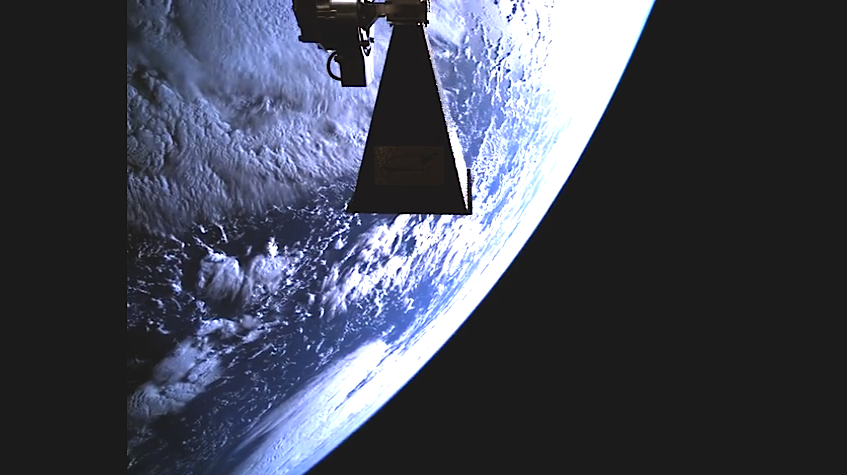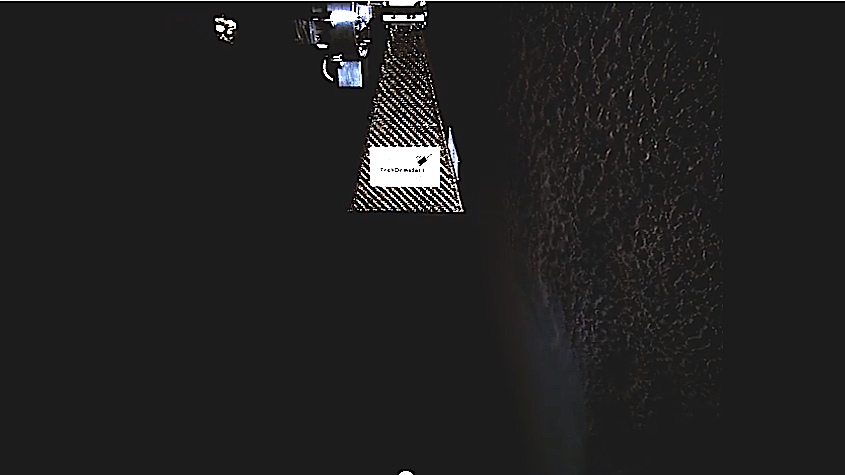[SatNews] ..."and are looking forward to the next phase—the demonstration of a range of new technologies being flown on this innovative mission.”
Surrey Satellite Technology Ltd (SSTL) has released a video from a camera mounted on an exterior panel of TechDemoSat-1, which shows the satellite moments after separation from the Fregat upper stage of its Soyuz-2 launcher, and as it begins its first orbit in Space. TechDemoSat-1 was launched on July 8, 2014, and is an in-orbit technology demonstration mission, carrying innovative payloads for British academia and industry.
The video is approximately one minute in duration and can be viewed on SSTL’s YouTube channel using the following URL.

Published on Aug 11, 2014 Video taken in-orbit on 8 July 2014 using an inspection camera on-board the TechDemoSat-1 satellite starting about 30 seconds after separation from the launcher. At 6 seconds the Sun appears at the top of the frame as a very bright white flare, before the rotation of the satellite reveals a view of Earth below, of the Pacific Ocean
The video capture starts rolling approximately 30 seconds after TechDemoSat-1 is injected into orbit by the launcher, and was taken by an inspection camera mounted on the exterior of the spacecraft, with the lens trained on the satellite’s Antenna Pointing Mechanism. As the video rolls the camera lens captures the first moments of TechDemoSat-1’s mission, starting with a view into the darkness of free Space.
At 6 seconds in, the Sun appears at the top of the frame as a very bright white flare, with a black dot at the center where the image is saturated by the intensity of the light. As the Sun disappears from view, the satellite’s rotation reveals a spectacular vista of “blue marble” Earth (to the right), with the lens capturing cloudy skies over the Pacific, south of French Polynesia.

At 25 seconds into the video the Fregat upper stage of the Soyuz-2 rocket appears as a gold object passing away from the satellite left to right at a distance of approximately 60 metres (see photo on left). At 34 seconds a white “dot” crosses the frame left to right—this is almost certainly one of the other satellites that shared the ride into orbit with TechDemoSat-1. The video finishes with the rotation of the spacecraft bringing the Earth back into view.
Sir Martin Sweeting, SSTL’s Executive Chairman said “It is very rare to see actual footage of our satellites in orbit, and so viewing the video taken from TechDemoSat-1 moments after separation from the rocket has been a hugely rewarding and exciting experience for everyone at SSTL. We are delighted with the progress of commissioning the TechDemoSat-1 platform, and are looking forward to the next phase—the demonstration of a range of new technologies being flown on this innovative mission.”
SSTL’s Operations team have now completed commissioning of TechDemoSat-1’s systems, and the commissioning of the payloads on-board this technology demonstration spacecraft has begun. TechDemoSat-1 is the first satellite to be controlled from the new Operations Center at the Satellite Applications Catapult in Harwell.
The inspection camera on-board TechDemoSat-1 will monitor the behavior of key mechanical payloads, including the Antenna Pointing Mechanism which is in view for the duration of this video. The camera was manufactured by SSTL’s optics experts from COTS (Commercial-Off-The-Shelf) technologies and combines a color CMOS camera with a high performance machine vision lens. Both the camera and lens were stripped down and ruggedized to survive the vibration and shock loads experienced during launch. The camera system was optimized to give a depth of field capable of delivering an in-focus image of the Antenna Pointing Mechanism and also the Earth in the background. The camera is connected to the spacecraft’s High Speed Data Recorder which captures the data as well as allowing control over the camera settings.

